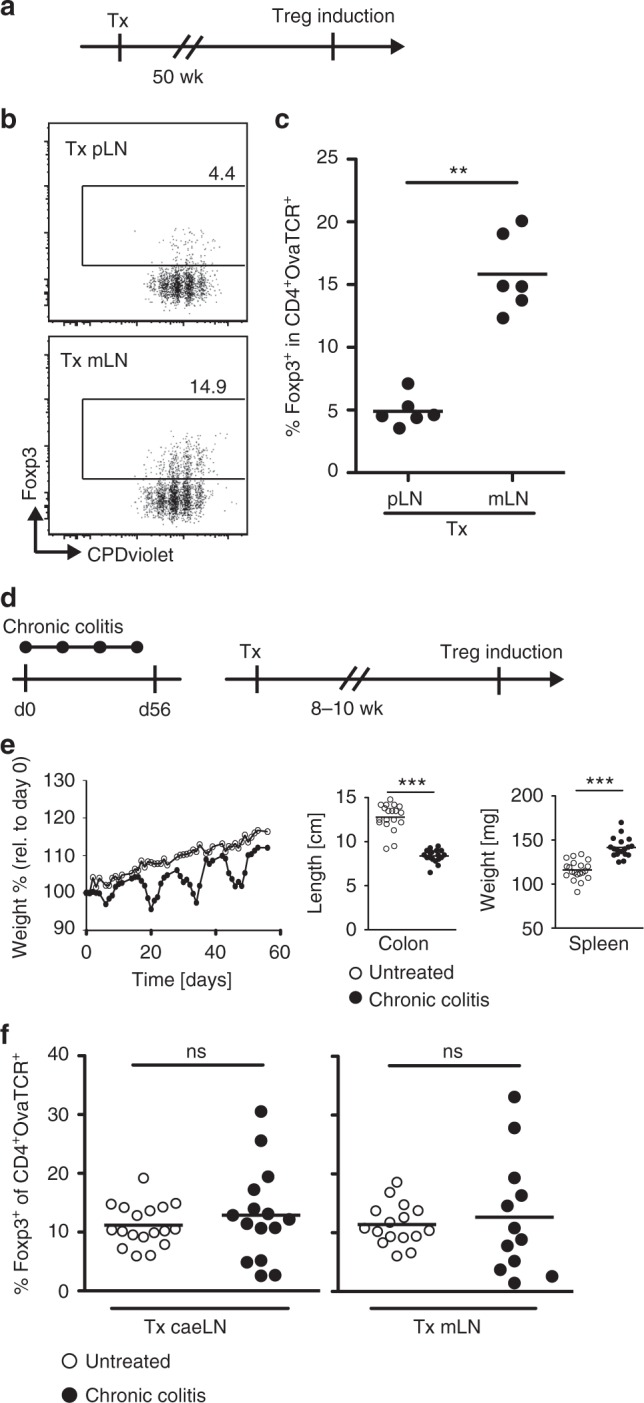Fig. 1.

Long-lasting, inflammation-resistant retention of tolerogenic properties in transplanted mLNs. a-c mLNs or pLNs from SPF-housed mice were transplanted into the popliteal fossa of SPF-housed recipient mice. Fifty weeks later, transplanted mice received CPDviolet-labeled cells isolated from Foxp3hCD2xRag2−/−xDO11.10 mice. On two consecutive days, recipients were immunized via repetitive i.v. injection of Ova323-339 peptide and analyzed on day 3 after the first immunization. b Exemplary dotplots depict de novo Treg induction in indicated transplanted LNs gated on adoptively transferred OvaTCR+CD4+ cells. c Scatterplot summarizes frequencies of de novo induced Foxp3+ Tregs among transferred OvaTCR+CD4+ cells recovered from transplanted LNs. Data pooled from two independent experiments are shown (n = 6). d–f SPF-housed BALB/c mice aged eight weeks were treated with 5% DSS in drinking water ad libitum for four days followed by ten days of normal drinking water. This treatment cycle was repeated four times. e Relative changes in body weight during DSS-induced chronic colitis were monitored over time (filled circles). Uninfected mice served as controls (open circles). Scatterplots summarize colon length and spleen weight of DSS-treated mice and untreated controls. f caeLNs or mLNs from DSS-treated mice (chronic colitis) and from untreated controls were transplanted to the popliteal fossa of healthy mice after removal of the endogenous popliteal LN. After eight to ten weeks of reconstitution, de novo Treg induction was assessed in transplanted mLNs. Scatterplots summarize frequencies of de novo induced Foxp3+ Tregs among transferred OvaTCR+CD4+ cells recovered from transplanted mLNs (open circles, untreated; filled circles, chronic colitis). Data pooled from four independent experiments are shown (n = 12–18). caeLN caecum-draining and colon-draining lymph node, DSS dextran sodium sulfate, rel. relative, Tx transplantation
